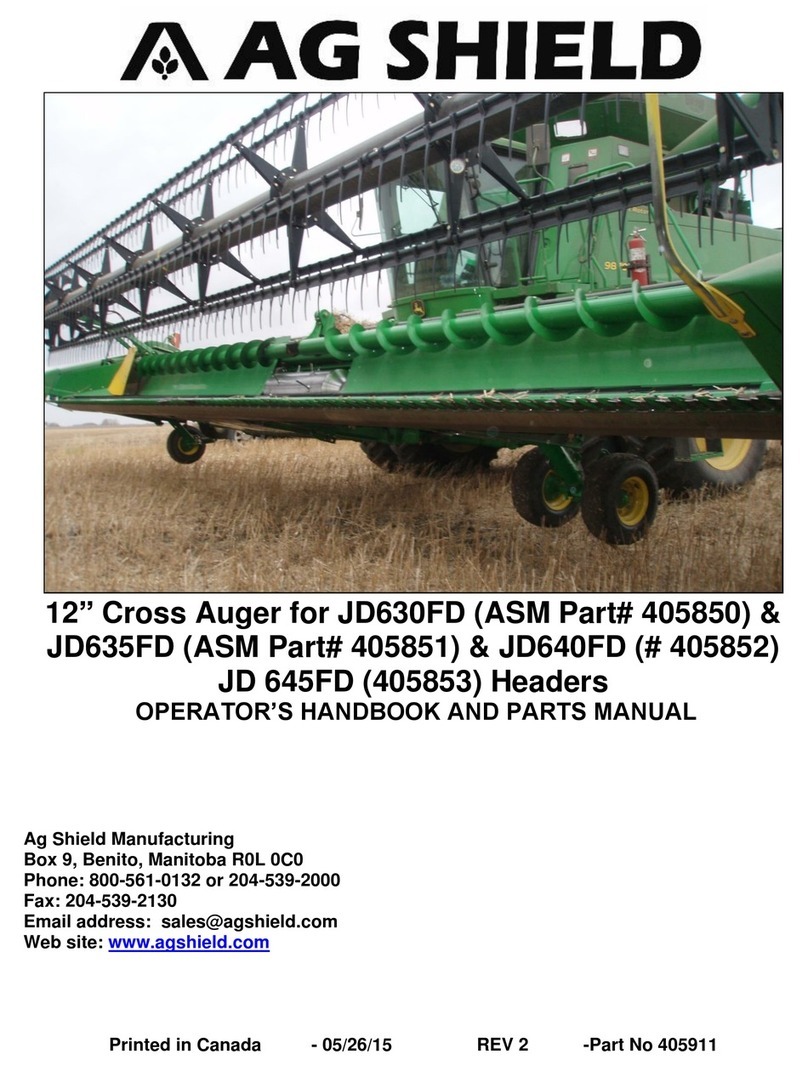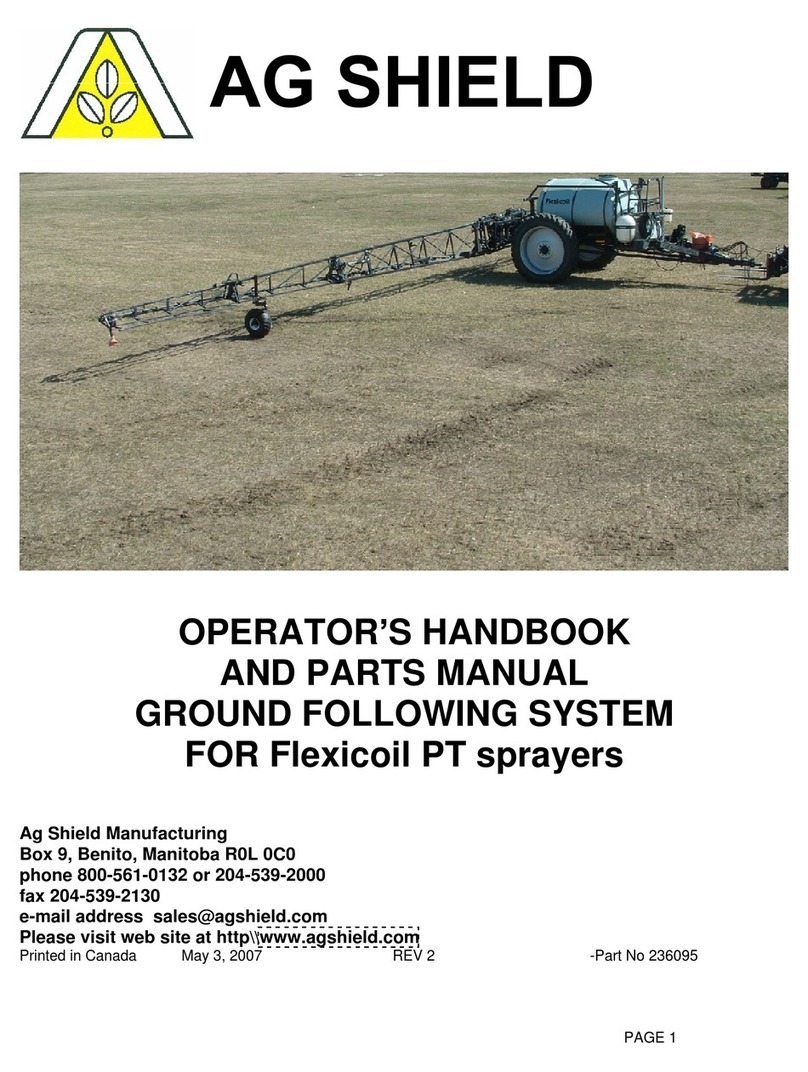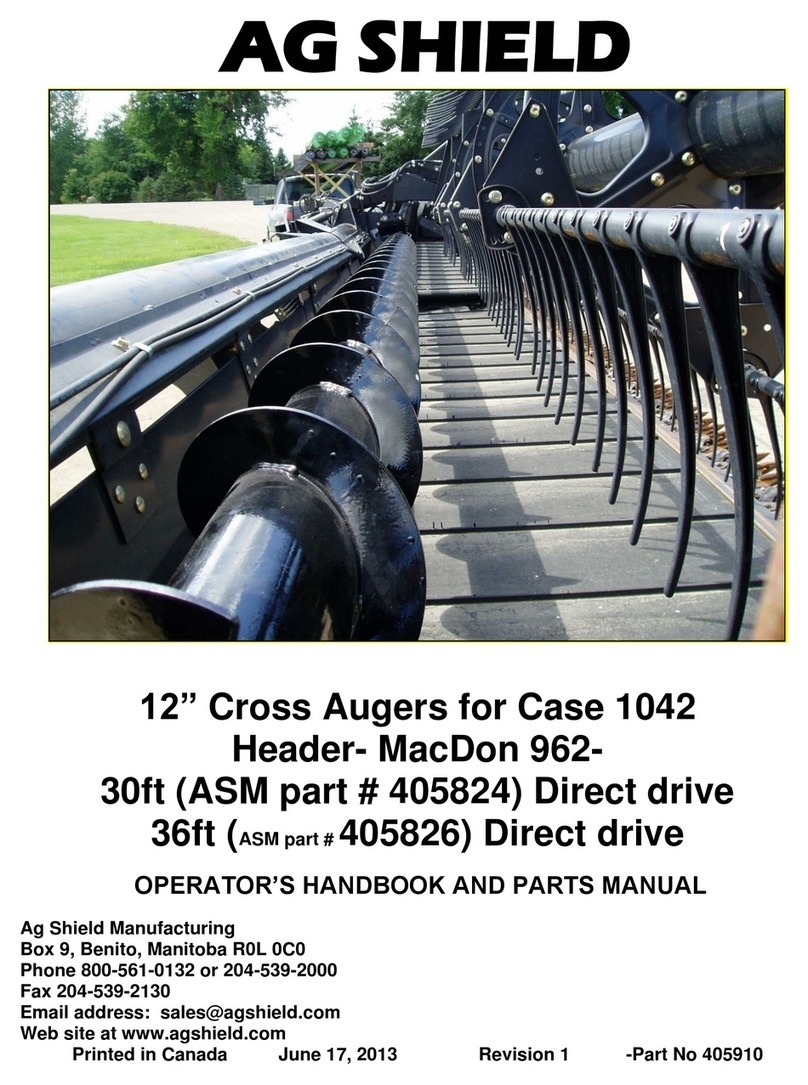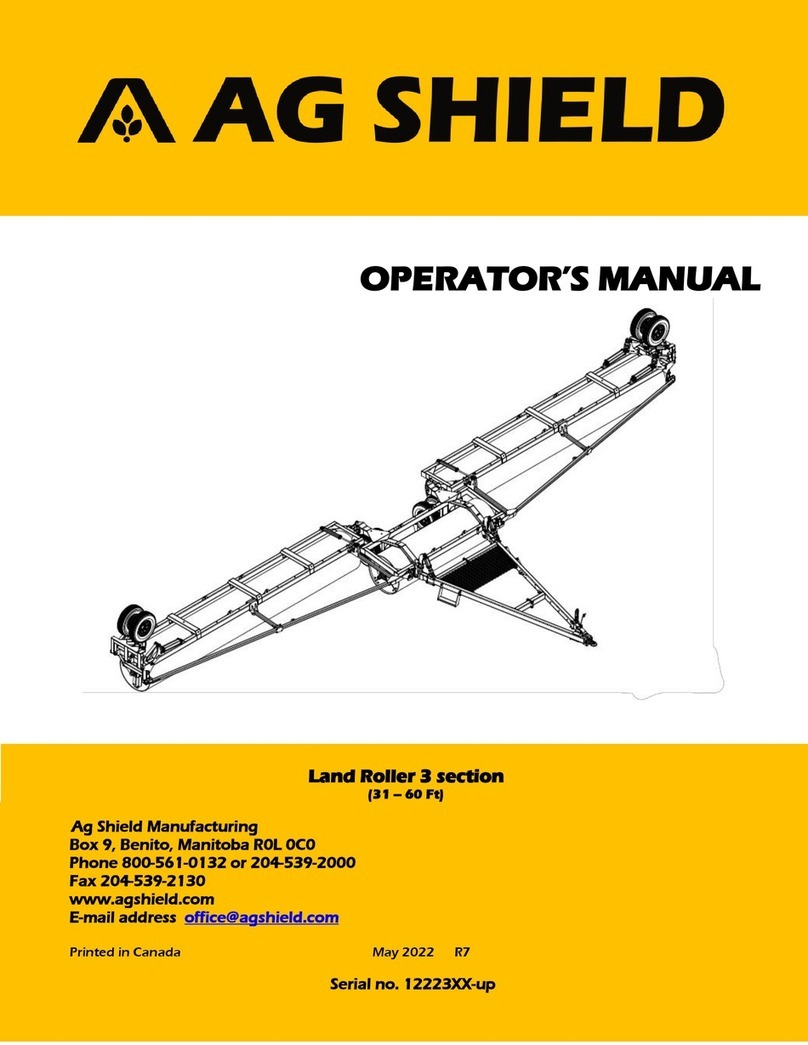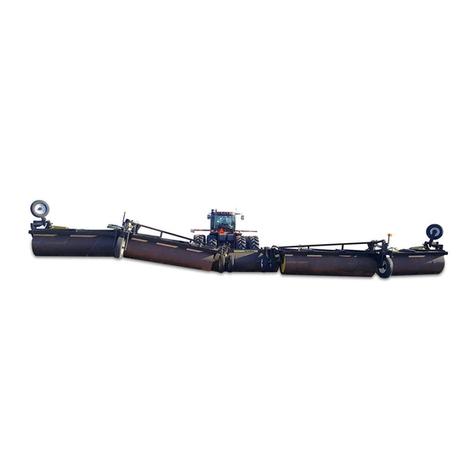3.3. MAINTENANCE SAFETY
1. Review the Operators Manual and all safety items
before working with, maintaining or operating the
reconditioner.
2. Stop the tractor engine, place all controls in
neutral, set park brake, remove ignition key, wait
for all moving pads to stop before servicing,
adjusting, repairing or unplugging.
3. Before applying pressure to a hydraulic system,
make sure all components are tight and that steel
lines, hoses and couplings are not damaged.
4. Relieve pressure from hydraulic circuit before
servicing or disconnecting from tractor.
5. Keep hands, feet, clothing and hair away from all
moving and/or rotating pads.
6. Clear the area of bystanders, especially children,
when carrying out any maintenance and repairs or
making any adjustments.
7. Place stands or blocks under the frame before
working beneath the machine.
3.4. THROWN OBJECTS SAFETY
1. Always wear safety goggles when working near or
adjusting conditioner.
2. Never stand or run directly behind rollers when
machine is rotating, as rollers are capable of
throwing obstacles at greater than 30 mph.
3. Shields are provided to reduce thrown debris
hazard, Leave chain guard in place, be sure the
rock guards are in place, inspect chain guard
frequently to ensure protection is in good repair.
3.5. CHAIN DRIVE SAFETY
1. Always keep safety guard in place. You might be
the one who trips and falls into a rotating machine.
2. Never adjust the chain tension, roller spacing,
roller tension, or other items with the machine
running, Always stop the machine before opening
chain cover.
3.6. HYDRAULIC SAFETY
1. Always place all tractor hydraulic controls in neutral
before dismounting.
2. Make sure that all components in the hydraulic
system are kept in good condition and are clean.
3. Replace any worn, cut, abraded, flattened or
crimped hoses and steel lines.
4. Do not attempt any makeshift repairs to the
hydraulic lines, fittings or hoses by using tape,
clamps or cements. The hydraulic system operates
under extremely high-pressure. Such repairs can
fail suddenly and create a hazardous and unsafe
condition.
5. Wear proper hand and eye protection when
searching for a high-pressure hydraulic leak. Use a
piece of wood or cardboard as a backstop instead
of hands to isolate and identify a leak.
6. If injured by a concentrated high-pressure stream
of hydraulic fluid, seek medical attention
immediately. Serious infection or toxic reaction can
develop from hydraulic fluid piercing the skin
surface.
7. Before applying pressure to hydraulic system
make sure that all connections are tight and that all
hoses and fittings are in good condition.
3.7. MECHANICAL GEARBOX
DRIVELINE SAFETY
The operator must obey all safety labels and must
maintain the proper shielding. A high percentage of
driveline injuries occur when safety shielding is missing
or not functioning properly.
1. Do not operate the machine without all driveline,
tractor, and implement shields in place.
2. Before operating the machine be sure drivelines
are attached securely to the tractor and to the
implement.
3. Keep operators and bystanders away from all
moving parts.
4. Shut off tractor engine and remove key before
coming close to the implement or doing any
maintenance






